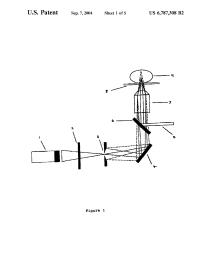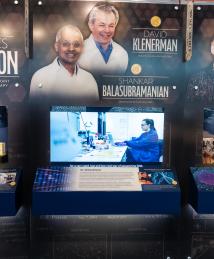Shankar Balasubramanian
"As a scientist, you're always driven by your curiosity. But deep down, you hope that one day you may play a part in something that makes a difference for other human beings."
Shankar Balasubramanian and David Klenerman co-invented Sequencing-by-Synthesis (SBS), a Next Generation DNA Sequencing (NGS) method that made possible efficient, low-cost and large-scale genome sequencing. Their work has enhanced our understanding of life, and enabled applications in genomics, medicine and biology.
Balasubramanian was born in Madras, India, in 1966, and his family moved to the U.K. in 1967. Spending much of his childhood in Cheshire playing soccer, Balasubramanian initially dreamed of pursuing the sport professionally. He also learned the value of hard work while spending his summers as a laborer at a neighboring farm.
He has said his journey toward science “wasn’t a predictable pathway.” He explored many different possibilities and was not afraid of failing. “This is how you learn, by trying things,” said Balasubramanian in an interview with the National Inventors Hall of Fame®. “Each experience changes you, nudges you in a slightly different direction.”
His path eventually brought him to the University of Cambridge, where he earned his bachelor’s degree in natural sciences in 1988 and doctorate in enzyme chemistry in 1991. He came to the U.S. to complete his postdoctoral research at Penn State University before returning to Cambridge to begin his research career in 1994.
While at Cambridge, Balasubramanian met fellow National Inventors Hall of Fame Inductee Klenerman. As they began collaborating, they had “a fundamental, rather abstract idea to build a piece of instrumentation and use it to watch DNA being synthesized one building block at a time by an enzyme, a DNA polymerase, using fluorescence detection.” In 1995, they gained funding for their idea and recruited postdoctoral researchers to join them. As they explored, they began to see a way to sequence DNA with a transformative new method.
SBS involves fragmenting DNA, decoding each fragment, base by base, and color coding them with fluorescent nucleotides added by an enzyme. By repeating this cycle many times, scientists could determine the DNA sequence of every fragment. “The reason [SBS] is powerful is you can do it to literally billions of different DNA sequences, all arrayed on the surface of a chip by massive parallelization,” explained Balasubramanian.
In 1998, he and Klenerman founded Solexa to develop and commercialize their technology. Solexa was acquired by Illumina in 2007, and SBS is now deployed in labs across the world. It has been applied to identify disease genes, advance our understanding of cancers, perform noninvasive prenatal testing and further COVID-19 research. While in 2000 sequencing a single genome cost over $1 billion and took more than 10 years, now it costs $200 and takes just one day. Thanks to SBS, more than 1 million human genomes are sequenced each year.
Balasubramanian, who holds 23 U.S. patents, serves as professor of medicinal chemistry at the University of Cambridge and research leader at the Cancer Research UK Cambridge Institute. He was knighted for his contributions to science and medicine in 2017, and his many awards include the 2022 Breakthrough Prize in Life Sciences. Discussing the continued success of SBS, he said he could not have imagined the method would become ubiquitous across life sciences research.
“As a scientist, you're always driven by your curiosity,” Balasubramanian said. “But deep down, you hope that one day you may play a part in something that makes a difference for other human beings.”


